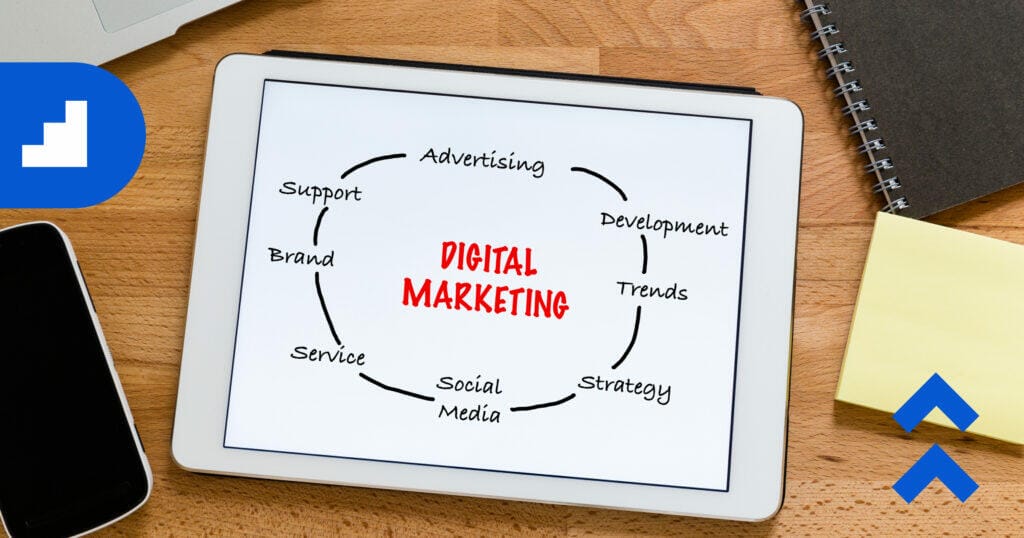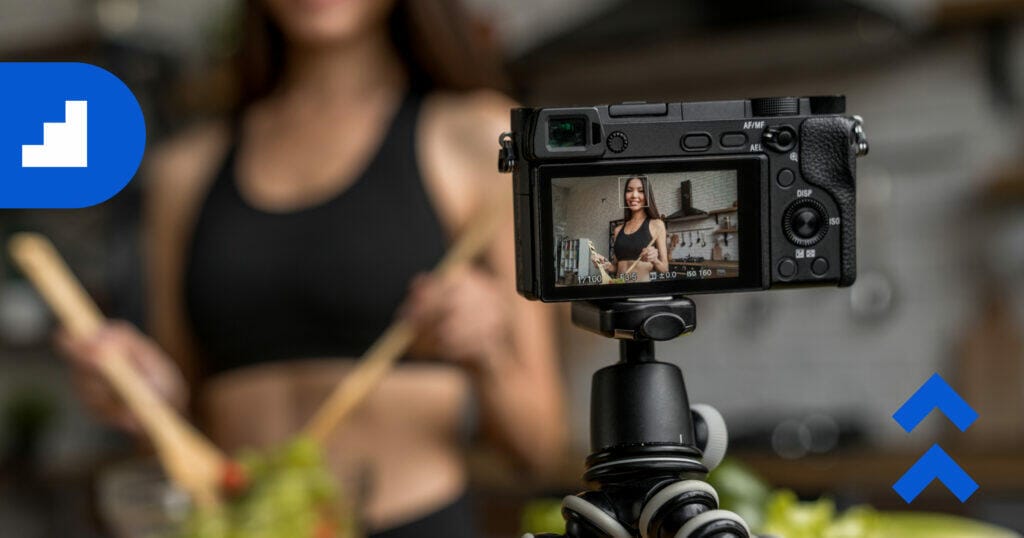This article was written by Nick Gausling, former Cansultant.

We live in a time where digital-first marketing is the name of the game for almost every business, and especially for specialty B2C. But ‘digital marketing’ is extremely broad and constantly changing. So what type of digital marketing should you be doing? Maybe just as importantly, what shouldn’t you be doing?
In far too many businesses, the marketing function is one of the primary places money goes to waste under the guise of productivity. This is because doing marketing well is not easy, and a lot of marketers would rather do flashy but ultimately less-effective things, rather than those that are not as glamorous but actually work.
A Cautionary Tale in Digital Marketing
But what does it mean for marketing to work? Raising brand awareness is the wrong answer. There’s a billboard I drive by sometimes which itself advertises the billboard company. The sign says, “Does advertising work? It just did.” The premise is totally wrong. The goal of marketing isn’t people seeing or even knowing your brand; the goal of marketing is getting potential customers into your sales ecosystem. Brand awareness is a necessary but insufficient step towards achieving the goal of marketing.
Some companies have started to fold marketing back into sales, dissolving the marketing and revenue officer roles and instead having a unified commercial officer. But in many companies, these are viewed as distinct functions, and it’s incredibly common to see marketing leaders dodge responsibility for revenue.
The entire purpose of marketing is to give your company a realistic chance to make a sale. Marketing material doesn’t actually make the sale, but it does need to get potential customers into your sales funnel. It doesn’t matter what channel you’re selling through: if your marketing doesn’t have a clear link to the number and/or quality of realistic opportunities you have to make a sale, it’s a failure.
Once upon a time, a company I was working with brought in a new hard-hitting marketing director who came from a data and statistics background. He was serious about making sure his marketing campaigns were generating real value for the business. Prior to that, this company had been taken to the cleaners by an array of failed sponsorships, random publicity campaigns, and other similar marketing tactics. The cost was enormous, and the discernible impact to sales near zero.
Early on, the Director was on a call with the publisher of one of the top trade magazines in the industry, who was trying to get him to pay for a pricey ad campaign in the magazine. The Director asked the Publisher for some data on past campaign results, estimated ROAS (return on ad spend), or really any other info that would help quantify the campaign’s potential value. The Publisher, offended and taken aback, said nobody asks that question and that the Director didn’t understand how the industry works. The Publisher then condescendingly asked, “Do you know what a hit (view/impression) is?” The Director passed on the ad campaign, and so the Publisher himself lost a sale.
But the surprising thing is people like this Publisher are absolutely everywhere. Many marketers (and the people who sell to them, including marketing agencies) are notorious for consuming vast sums of capital on campaigns that look impressive on the surface, but which they can’t actually defend based on sales impact. They instead deflect with claims like “brand exposure is incalculable so we can’t quantify an ROI” or vague generalizations such as “the lifetime value of a new customer is $, so imagine how much money you’d make if this campaign were seen by # people.”
If a marketer ever says stuff like that, get rid of them. On the other hand, if you find a marketing executive or agency who is serious about ROAS like that director I mentioned before, you’d better do everything you can to keep them happy and producing for you.
With that background, let’s talk about some common digital marketing tactics used by specialty brands and what not to do.

Pay-Per-Click Ads: Once the Standard, Now a Dying Model
A lot of people default to thinking that digital marketing means running pay-per-click advertising like Facebook ads, Google ads, or one of countless other ad platform brokers. Technically there’s several variations of this where you might pay for impressions/views (almost always a bad idea), clicks (better), or — in rare cases — actual sales conversions (best, but harder to find and more commonly-associated with an affiliate model as discussed below).
While these types of campaigns can work for both shopping goods and specialty brands, they aren’t the best tactic for either. Facebook in particular tends to produce poor ROI. There’s a few reasons why your pay-per-click campaign might fail: poor customer targeting in the campaign design, bad sales landing pages that don’t draw the customer in, unreliable customer data from the ad platform, and the proliferation of ad blockers and consumer privacy regulations are some of the major ones. Click fraud — where the ad broker hires a third-party to click your ads and artificially inflates the numbers — is also a concern when using less-reputable platforms.
Despite those major limitations, this type of advertising can generate revenue fast if the campaign is done well. But that means you need the right product offering, with the right ad copy, shown to the right customers, on the right platform, at the right time, leading them to the right sales page. A lot of things need to go right in order for it to work, so unless you’ve invested significantly into perfecting this process, your campaign is pretty likely to disappoint. Even if it ‘succeeds’ in the sense of generating some positive ROI, it’s rarely the best use of your marketing budget.
Brave Ads represents a bold reimagining of the pay-per-click model that solves most of the problems with legacy versions, and I’m tentatively optimistic that it will eventually create an ecosystem for pay-per-click to thrive again like never before. But it’s still fairly new and cost-prohibitive for most smaller companies, and not likely to work well for very local businesses. Medium to larger companies with regional, national, or international capabilities — especially D2C brands — should definitely consider it.
Social Media: Good for Some Things, Bad as a Primary Strategy
Building a following on social media can be a real slog and there’s a lot of downsides. To do it well takes significant time and energy, especially if you’re starting from scratch. You can use pay-per-click advertising for a specific platform to boost your best content and gain followers, but be careful. It might make sense to do this, if your campaign is very precise, oriented to very specific customer segments, and you have clear goals in mind for what you intend to do with a social media audience. However, it can quickly fail for all the reasons discussed above about pay-per-click.
You can certainly build a social media audience organically with low cash spend, but it’s probably going to take a long time and require a lot of manual work engaging other peoples’ content to build awareness for your own brand. To do it really well may require full-time staff dedicated to spending all day engaging on social media, so what appears to be a low-cash tactic may actually be a substantial labor expense.
But let’s back up: should you even focus on social media in the first place? One thing that became abundantly clear during Elon Musk’s due diligence of Twitter last year is that a lot of what’s happening on social media is automated rather than authentic engagement. It’s extremely common to see brands with hundreds of thousands or even millions of followers get post engagement as low as the triple or double digits. If your audience isn’t engaged, it doesn’t matter how large it is. And even if they are engaged, if they aren’t potential buyers then you’re wasting time and money accumulating them.
Not to mention the bot problem. A significant portion of social media ‘users’ are actually fake bot profiles, which was another point of contention that came up during the Twitter acquisition. Meaning that some of that very limited engagement brands are getting aren’t even real people. Musk recently remarked that most people simply don’t use social media regularly in any meaningful way; executives need to be mindful of that.
So is social media useful at all? Yes, if you have the right expectations and focus on a small number of platforms most likely to align with your target customers. The best two ways to use social media are as an additional distribution channel for your content marketing (which we’ll discuss in another article), or to engage customers in personalized conversation around sales or service (which may require dedicated staff).
But if your approach is just to churn out company news, advertise your latest sales and product updates, or accumulate as many followers as you can with no regard to their purchasing potential — which is what most brands do — you’re going to get poor results. Nobody cares about any of that if it’s all you have to offer; they only care about those things if they’re presented alongside a lot of other value-add content or personalized conversation that keeps the customer engaged.

Influencers: A Great Way to Lose Money Fast
The original form of digital influencer consisted of affiliate marketers, where the brand paid the influencer-affiliate a commission or credit based on sales generated through that affiliate’s referrals. Usually there would be substantial subject matter overlap between the affiliate and the brand. Provided you find the right affiliates, this tactic can still work very well today. I personally participate in a few affiliate programs for products I actually use and believe in.
In contrast, most of what are referred to as contemporary ‘influencers’ are more like older style celebrity or athlete endorsements. They tend to be younger content creators on platforms like TikTok, Instagram, or YouTube, but you can find many different types of influencer on almost any platform. So do they work?
Heavy-hitter influencers with massive audiences may want a substantial cash retainer up front in addition to a revenue split, so the capital outlay can be significant and still has a high probability of failure. Also note that many of that influencer’s followers might be fake or disengaged, as discussed above with social media.
Lesser-known influencers may require little to no cash up front, but also are even less likely to succeed unless their audience is very niche with high overlap in your exact customer segments. Also, any time you outsource your brand to a third-party representative, you’re incurring reputation risk, which is why old school celebrity endorsements often had some type of ‘morality clause’ in the contract that allowed the brand to back out of the deal under certain conditions.
Should you ever consider influencers? Yes, if you find someone whose audience very closely fits your ideal customer segments, has an excellent reputation, actually loves your product or service, and is willing to work with you to be a good long-term partner. Often (though not always) this type of influencer is already your customer and they reach out to you looking to get involved with your brand. They also tend to be people who monetize in some way other than just ‘influencing,’ but not necessarily.
If you’re expecting to pay influencers who don’t really care about your product and still see great results, you’ll probably be very disappointed and waste a bunch of money in the process.
On Cansulta, you can browse consultants by expertise, and connect with vetted professionals in Intro sessions FREE.
Not sure what expertise you need?
Our Concierge team is happy to discuss your needs and match you with the best suited consultant.